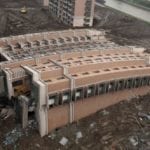 Weird Stuff
Weird Stuff  Weird Stuff
Weird Stuff  Health
Health Ten Confounding New Inventions from the World of Biomedicine
 Creepy
Creepy 10 Death Superstitions That Will Give You the Creeps
 Movies and TV
Movies and TV 10 Movies That Get Elite Jobs Right, According to Experts
 Weird Stuff
Weird Stuff 10 Times Real Laws Were Based on Bizarre Hypotheticals
 Animals
Animals 10 Inspiring Tales of Horses Being Human
 Mysteries
Mysteries Top 10 Haunting Facts About the Ghost Ship MV Alta
 History
History 10 Surprising Stories About the Texas Rangers
 Humans
Humans 10 Philosophers Who Were Driven Mad by Their Own Theories
 Miscellaneous
Miscellaneous 10 Video-Game-Worthy Weapons and Armors from History
 Weird Stuff
Weird Stuff 10 Warning Labels That Exist Because Someone Actually Tried It
 Health
Health Ten Confounding New Inventions from the World of Biomedicine
 Creepy
Creepy 10 Death Superstitions That Will Give You the Creeps
Who's Behind Listverse?

Jamie Frater
Head Editor
Jamie founded Listverse due to an insatiable desire to share fascinating, obscure, and bizarre facts. He has been a guest speaker on numerous national radio and television stations and is a five time published author.
More About Us Movies and TV
Movies and TV 10 Movies That Get Elite Jobs Right, According to Experts
 Weird Stuff
Weird Stuff 10 Times Real Laws Were Based on Bizarre Hypotheticals
 Animals
Animals 10 Inspiring Tales of Horses Being Human
 Mysteries
Mysteries Top 10 Haunting Facts About the Ghost Ship MV Alta
 History
History 10 Surprising Stories About the Texas Rangers
 Humans
Humans 10 Philosophers Who Were Driven Mad by Their Own Theories
 Miscellaneous
Miscellaneous 10 Video-Game-Worthy Weapons and Armors from History
10 Incredible Historic Sites We Lost Forever (Due To Stupidity)
We’ve told you before about the many important items our species has managed to somehow lose over the years. But a few mislaid books don’t even begin to compare to the entire locations we’ve somehow destroyed. Through war, vandalism, or just stupidity, we humans have proved time and again that we’re the last people in the universe you should trust with anything valuable.
10The Singapore Stone

You’ve probably heard of the Rosetta Stone. The Singapore Stone was like its powerlifting big brother. The colossal boulder, 3 meters (10 ft) high and 3 meters wide, stood at the entrance to the Singapore River, inscribed with an ancient script no one could decipher. Today, we’re fairly confident it was a variation on Old Sumatran from the 10th–14th centuries, but for the people who discovered it in 1819, it was like an alien language. The stone and the surrounding area, considered holy, were clearly an important find.
So we blew it up.
In 1843, the British army requisitioned the land the stone was standing on to build a fort. Rather than cart the stone away to the British Museum or anything silly like that, they instead blew it to pieces and used the remains as building material, road surface, and a bench. Although a few fragments were saved and now reside in the National Museum of Singapore, the sacred site was utterly annihilated, with the majority of the stone’s text erased forever. Did it record an ancient victory, a local legend, or just an account of daily life? We’ll never know.
9The Senator Tree

At some unknown point 3,500 years ago, the seed of a cypress tree fell to the ground in modern-day Florida and took root. Over the next three and a half millennia, it grew to a height of 36 meters (118 ft). It saw the birth of Jesus Christ, the coming of Columbus, the Wall Street Crash, and the fall of the Berlin Wall, outliving all but four other trees on the planet. The Senator, as it became known, was even honored by President Coolidge in 1929.
In 2012, local meth addict Sara Barnes climbed into the Senator to get high. At some point, it grew dark, and Barnes lit a fire to help her see. The fire instantly did what any fire lit inside a lump of wood would do and went completely out of control.
According to emergency services personnel, the Senator burned “like a chimney” for a couple of hours before collapsing into a pile of ash. Barnes was arrested and thrown in jail, reportedly telling friends she couldn’t believe she “burned down a tree older than Jesus.”
8The Paradise Of Nauru
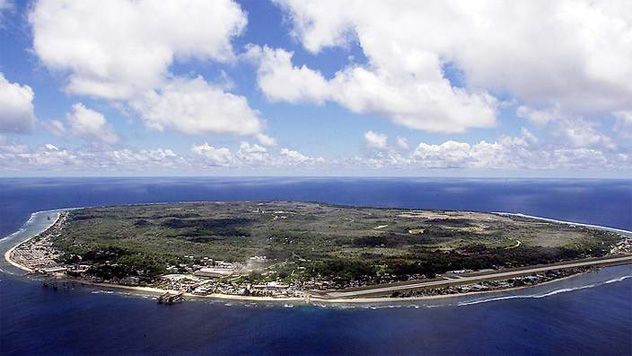
The tiny island nation of Nauru is today best known for housing one of Australia’s grim offshore detention centers. Only a century or so ago, though, it was better known as paradise. When Europeans first discovered it in the 18th century, it was covered with tropical vegetation so lush and dense they officially named it Pleasant Island. Even today, pictures of its beaches are so impossibly perfect that you’d be forgiven for thinking they were Photoshopped.
The above photo shows the whole of Nauru as it looks today, a blasted heap of stone devoid of any life whatsoever. Unfortunately for the inhabitants of Pleasant Island, their country was lying directly on top of one of the biggest deposits of phosphate on Earth. Starting in 1900, various colonial powers stripped the island bare. When Nauru declared independence in the 1960s, the new government continued to mine the island, leaving behind a wasteland in which nothing can grow. Although Nauru itself technically still exists, everything that made those first sailors fall in love with the place is now gone forever.
7The Atacama Desert’s Archaeological Sites
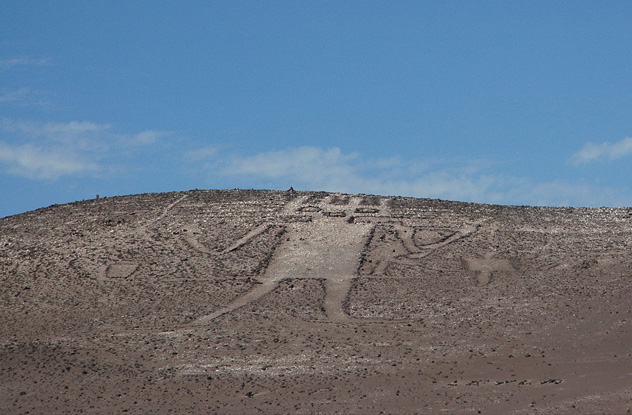
The Atacama Desert is the driest place on Earth. Thanks to its lack of moisture, delicate pre-Columbian drawings and artifacts have been perfectly preserved there for millennia. Some sand dunes even record the traces of the wind patterns that helped shape them 18,000 years ago. The last thing you’d want to do with these fragile sites is drive a car straight through them, yet that’s exactly what challengers in the Dakar Rally did in 2009.
Although previously held in Africa, the rally was changed to South America following terrorist threats in 2008. Unfortunately, the organizers neglected to check the route properly, resulting in six irreplaceable sites in the Atacama being utterly destroyed. Ancient geoglyphs that can only be deciphered from the air were left with tire tracks running through them. A pre-Columbian hunter-gatherer camp was crushed and ground into the dust, and plenty of other important sites were left with irreparable damage.
Bad as this is, later races were even worse. According to the Santiago Times, the 2011 edition of the race irreversibly damaged 44 percent of all sampled sites, leaving the Atacama’s cultural heritage in tatters.
6Jonah’s Tomb
Marking the final resting place of the Old Testament prophet most of us remember for getting swallowed by a whale, Jonah’s Tomb in Mosul was a pilgrimage site for Muslims and Christians alike. It was also a favorite place of archaeologists, with the oldest parts of the tomb complex being dated to the eighth century B.C. None of this cut any mustard with the leaders of ISIS, who took one look at this invaluable site and decided to blow it up.
In July 2014, ISIS troops entered the mosque above the tomb during prayers and ordered everyone out. Then they set explosives and completely destroyed the site and several nearby houses. By their ultra-strict interpretation of Islam, they were saving those present from worshiping a false idol. By everyone else’s interpretation, they were robbing us of an invaluable cultural treasure.
It seems ISIS have a thing for destroying cultural sites. In February 2015, they blew up a 2,700-year-old wall at ancient Nineveh, consigning yet more Iraqi history (and more of Jonah’s story, coincidentally) to the flames.
5Benin City
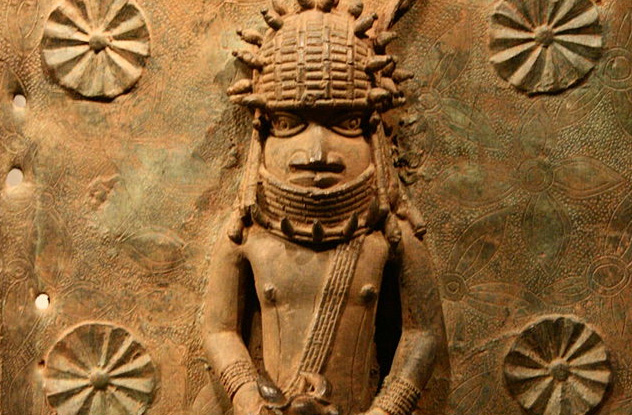
Until the 19th century, Benin City was one of the grandest sites on Earth. Portuguese traders recorded a city larger than Lisbon, with large, ornate houses and streets that ran “straight and far as the eye can see.” The Oba’s Palace at the center of the city was so beautiful that Dutch engravers portrayed it with the same fidelity they did Florence, rendering the turrets and cityscape in meticulous detail. Many Europeans admired it as much as their home cities. Then the British came along and burned it to the ground.
In 1892, the British signed a treaty with the rulers of Benin, giving them the right to exploit the land. When the government refuse to cooperate with the UK’s trading demands, London sent a force of 10 soldiers to make them. All 10 died. The British responded by raising an army, arming them to the teeth, and ransacking Benin City. In the course of 17 days’ fierce fighting, the Oba’s Palace was destroyed, the city was looted, and a fire left virtually nothing standing. It was as if Paris or Athens had gone up in flames but even worse because nobody seemed to care.
4Lake Urmia

As late as the 1990s, Lake Urmia in Iran was a tourist paradise. Famed for its azure blue waters and 100 islands hiding all manner of exotic animals, it drew crowds in from around the globe. People would bathe in its supposedly healing mud; others would marvel at the flocks of flamingos the waters drew. The size of Luxembourg, the lake was known as one of the natural wonders of the world. Today, it’s a desolate wasteland.
Thanks to some highly questionable government policies comparable to those that destroyed the Aral Sea, Lake Urmia is on the verge of disappearing. Already, the waters have receded so far back that rusted boats are left abandoned on parched dry land and all the wildlife that can has left. In its place now swirl toxic salt storms that ravage the landscape, spreading death in their wake. Although the Iranian government has pledged billions of dollars to restoring Lake Urmia, no one seriously expects them to do anything.
3The Mayrieres Cave
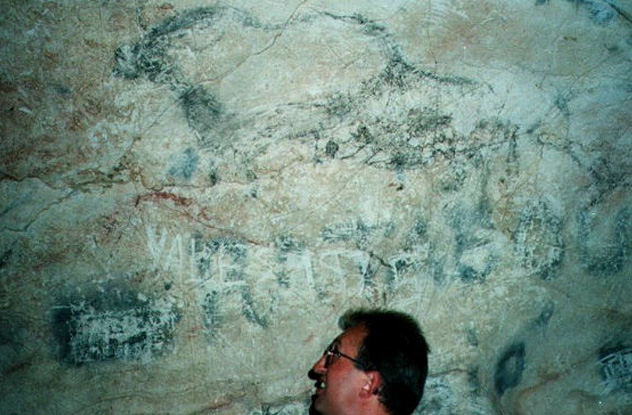
A group of cavemen living in the southwest of modern-day France 15,000 years ago decided to get artistic in the Cave of Mayrieres superieure. The results were two cave paintings of bison executed with incredible skill and an eye for beauty. Although nowhere near as vast or impressive as the Chauvet Cave, the artworks were still in startlingly good condition and considered invaluable. Until, that is, they caught the attention of some local do-gooders.
In spring 1992, a local Protestant youth club decided to do a good deed by cleaning some nearby caves of graffiti. Armed with wire brushes and plenty of ignorance, the 70 teens descended into the Cave of Mayrieres superieure and proceeded to scrub away much of the prehistoric art. Although they ultimately realized their mistake, the damage was more or less total. The paintings were ruined, French cultural officials were up in arms, and the youth group wound up being awarded an Ig Nobel Prize for their contribution to destroying our past.
2Syria’s Ancient Sites
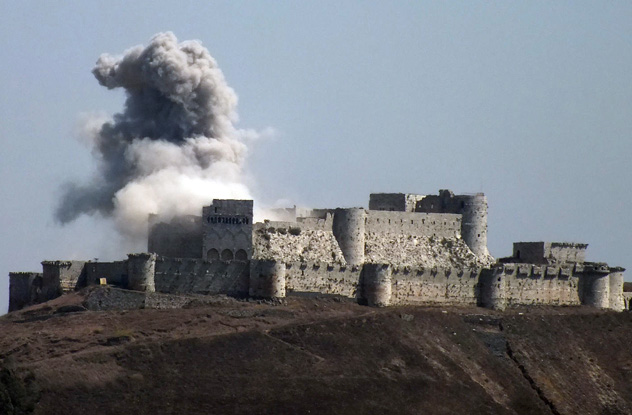
Currently in the grip of one of the worst wars in living memory, Syria has been ground zero for historical destruction for some time now. Along with the horrendous loss of human life, the war has cost the world more treasures than perhaps any other conflict of the modern era.
Almost since the fighting started, the historic cities of both Damascus and Aleppo have sustained such continuous damage that they’re now in ruins. In 2012, a fire ripped through the ancient Aleppo souk, utterly destroying one of the most important trading points on the historic Silk Road. One year later, the UNESCO-listed crusader castle Krak des Chevaliers was hit by an airstrike, while the ancient minaret on Aleppo’s grand mosque was finally leveled after standing for nearly 1,000 years. The fighting has also provided cover for professional tomb robbers, who have looted invaluable sites like Palmyra so thoroughly that almost nothing is left.
In December 2014, the UN declared that 300 heritage sites had been either damaged or utterly destroyed across the country. With ISIS now bombing cultural sites in the north, it looks like this figure will only increase.
1Everything In Saudi Arabia

We’ve told you before about Saudi Arabia’s bizarre fixation with transforming Mecca into a kind of Las Vegas of the Middle East. But this barely touches on the full insanity of the Wahhabi kingdom. Since 1985, Saudi Arabia’s ruling family has voluntarily destroyed over 98 percent of the kingdom’s Islamic heritage.
We don’t just mean they’ve knocked down some old buildings to put up new hotels, either. All evidence points to a deliberate attempt to demolish as many cultural sites as possible. A mosque belonging to Islam’s very first caliph, Abu Bakr, was recently razed to the ground and replaced with an ATM. At Mount Uhud in Medina, a famous fissure to which Muhammad himself supposedly retreated after a battle was filled in with concrete and fenced off from pilgrims. Nothing was built in its place.
Perhaps craziest of all is the Orwellian way the Saudi government tries to rewrite history. After plans for a new palace built over Muhammad’s birthplace were announced, signs instantly sprang up around the site, warning people that there was no evidence Muhammad had been born there. After Mount Uhud was filled in, another sign appeared declaring there was nothing special about this mountain and never had been. It’s said that when sites are marked for destruction, the bulldozers pull them down in the night and leave no evidence by morning that anything was ever there.
Because Wahhabism proscribes worshiping false idols, clerics in the kingdom have encouraged the destruction of monuments and artifacts that might distract people from worshiping Allah. In doing so, they’ve effectively annihilated many traces of Islam’s ancient past.
